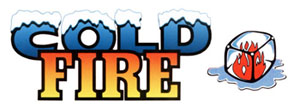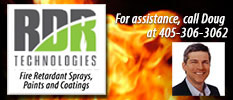Frequently Asked Questions

Is Cold Fire™ UL Classified?
Yes. Cold Fire™ is Classified as a Class A & B Wetting Agent (Listing Number 2N75).
Is Cold Fire™ classified with the NFPA?
Cold Fire™ has been tested in accordance with NFPA Standard 18 for Wetting Agents.
Does Cold Fire™ require special training?
No special training is required; follow directions in its use.
Does Cold Fire™ require special equipment in handling and applying agent to wildfires?
No, existing fire fighting equipment and application methods are used.
How is Cold Fire™ applied?
Cold Fire can be used with an eductor, used in foam tank, or batch mixed directly in the booster tank. It can be used with proportioning systems and CAFS systems. For wildfires, it can be applied using engines or from pumping stations along a fire line, by helicopters using Bambi buckets and other approved airborne methods. It can be used in standard water canisters filled with air or nitrogen.
What class fires can Cold Fire™ be used on?
Cold Fire™ can be used on Class A, Class B, and Class D fires along with being used for structure protection and in portable extinguishers.
What percentage of Cold Fire™ is used to extinguish the above classes of fire?
- Class A: use .5 – 3% of Cold Fire™
(ex. 500 gallons at .5% = 2.5gallons of Cold Fire) - Class B: use 3 – 6% of Cold Fire™
(ex. 500 gallons at 3% = 15 gallons of Cold Fire) - Class D: use 6 – 10% of Cold Fire™
(ex. 500 gallons at 6% = 30 gallons of Cold Fire)
Why use Cold Fire?
It’s a non-toxic, non-corrosive product that can be batch mixed directly into booster tanks with no need to flush out lines. Has indefinite shelf life when stored in closed containers. Its thermal insulation capability prevents re-ignition when properly applied.
Is Cold Fire™ hazardous to fire fighters?
No, Cold Fire™ is a completely non-toxic product, plant-based and biodegradable. It has a Hazmat HMIS rating of 0,0,0 – the same as water.
What are the recommended percentages of Cold Fire™ added to water?
Check the Dilution Rate sheet.
Was Cold Fire™ developed primarily for fire suppression?
Cold Fire™ was developed to provide the fire fighting industry with an efficient and effective fire-fighting agent that not only extinguishes fire quickly, but does so without harming the environment, fire fighters or fire victims. Cold Fire™ was developed with enhanced safety and future generations in mind.
Can Cold Fire™ be used on other types of fires?
Yes, Cold Fire™ can be used A, B, D and K Class fires – everything from a grass or brush fire to an ethanol fire. Because it uses a water carrier, it is NOT suited for electrical fires unless used with deionized water. Still not recommended.
How does Cold Fire™ work?
To understand how Cold Fire™ works, you must first understand the basic structure of fire. In order for a fire to be created, four components are necessary: fuel, oxygen, heat and chemical chain reaction. These components form what is called a “fire tetrahedron.” Most agents extinguish fires by breaking down one leg of the tetrahedron, heat or fuel. Cold Fire™ is considered to have 6 times the penetrating capability of water. This characteristic, coupled with its extraordinary capability to absorb heat, allows Cold Fire™ to penetrate a fire faster, absorb the heat, and bring the fuel source generating the fire under its flash point more quickly. Cold Fire™ also works to encapsulate the fuel source and its vapors, and simultaneously stops the chain reaction and begins to break down the molecular structure of the hydrocarbon fuel source, preventing re-ignition.
Is Cold Fire™ a Foam?
Yes and No. Most foams only sit on top of the fuel source, trying to “blanket and smother” it to eliminate the oxygen from a fire. It does not encapsulate or cool the source. Cold Fire is a unique agent that not only creates a foam blanket to smother the fuel, but it works into the fuel source to encapsulate and break the chemical chain reaction of fire. By encapsulating the fuel source, the vapors of the fuel can no longer be vaporized to cause re-ignition. Cold Fire is better than AFFF (Aqueous Film Forming Foam) because if the AFFF foam blanket is disrupted, the vapor of the fuel underneath the blanket can easily re-ignite.
Other advantages over Foam:
Cold Fire is non-toxic and non-corrosive. Foam is both toxic and corrosive. Cold Fire can be batch mixed directly into booster tanks or inducted without fear of clogging lines or corrosion of hoses and tanks. When using foam, lines need to be flushed out. Foam is also not a good agent for fighting vertical fires because it has minimal if no penetration value to penetrate and extinguish a fire faster. Cold Fire™ has 6 to 10 times the penetration capacity of water, extinguishing and cooling a surface many times faster than water. Cold Fire is also non-slip and does not leave a residue.
AFFF is a Class B foam. There are also many Class A foams on the market. Many fire departments purchase both Class A and B foams. Cold Fire allows fire departments to purchase only one product. Cold Fire extinguishes both Class A and B fires. By purchasing Cold Fire, fire departments will save money and time since they will no longer need to purchase two products, or flush out lines or tanks due to fear of clogging and corrosion.
What about Ethanol and other Polar Solvents?
Cold Fire will extinguish ethanol fires, as well as methanol and other polar solvents. A foaming nozzle is recommended to help knock down the vapors and kill the flames.
What are the advantages of using Cold Fire™ in place of other agents?
• Cold Fire™ is environmentally friendly, 100% biodegradable, non-toxic and non-corrosive
• Cold Fire™ reduces the density of hydrocarbon smoke, thereby increasing visibility
• Cold Fire’s unique rapid cooling capability enhances safety and reduces the chances of flashover and reignition
• The shelf life of Cold Fire™ is indefinite if stored in closed containers between 28°F and 120°F
• Cold Fire can be batch mixed directly into your booster tank.
• If using an eductor and 5 gallon pail, you do not have to carry the pail to within 100ft of the end of the hose, like you do with other foams.
• Cold Fire™ is non-corrosive and 100% soluble. It will not corrode your equipment or clog your hose lines
• Cold Fire™ is non-slip
What is the advantage of using Cold Fire™ in place of water alone?
Cold Fire is significantly more efficient than water alone. It enhances the water’s ability to penetrate the source of the fire, extinguishing the fire with significantly less water and reducing the amount of water damage. Cold Fire greatly enhances the water’s ability to absorb heat, allowing fire fighters to gain entry into a structure or rooms much faster. By removing the heat, it makes it much safer for the firefighters.
How is Cold Fire™ sold?
Cold Fire is sold in 5 gallon pails, 55 gallon drums and 275 gallon totes for fire departments, commercial and industrial applications. Cold Fire is also sold in 8 oz, 12 oz. spray cans and 32 oz. spray bottles for trade, tool, and racing applications.
